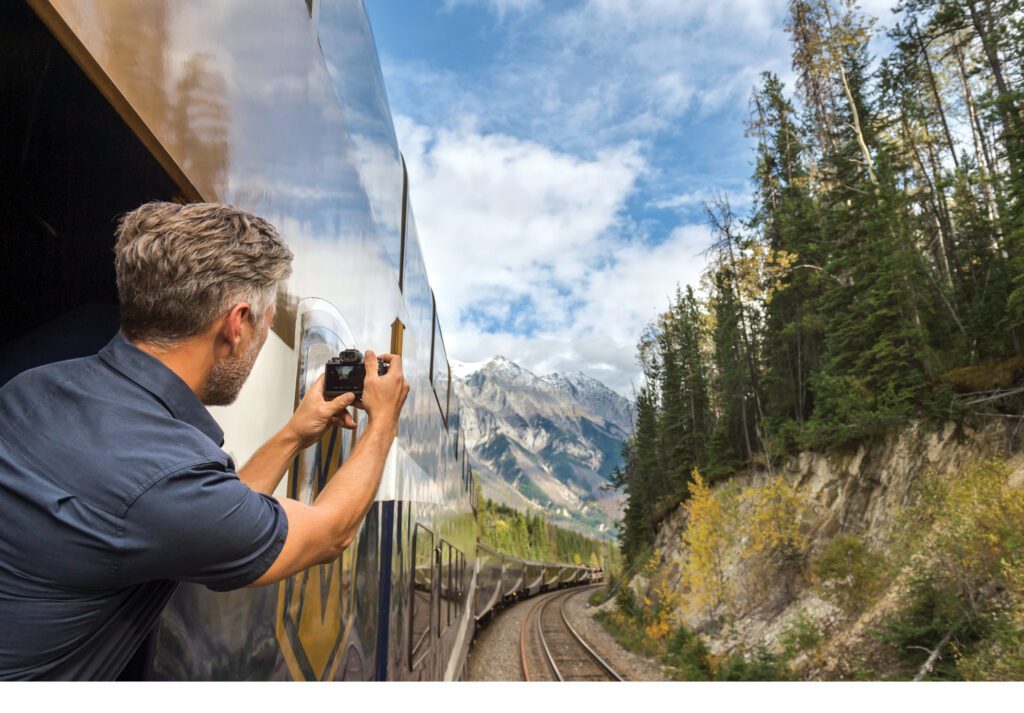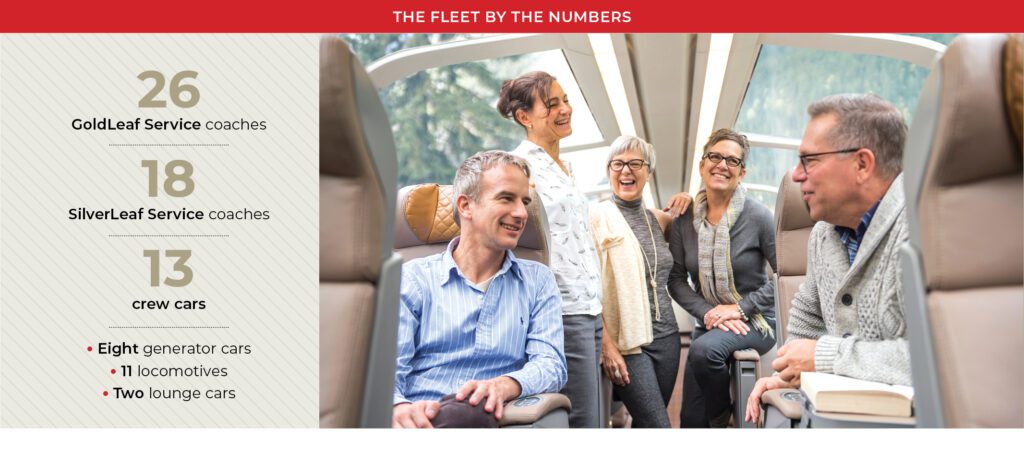

Tristan Armstrong
CEO / Rocky Mountaineer
For Rocky Mountaineer CEO Tristan Armstrong, a stellar passenger experience is the cornerstone of a premier luxury travel business. Founded by his father in 1990, Rocky Mountaineer transforms standard travel into a unique, unforgettable railway adventure that’s supported by key relationships forged with sales, railway, hotel, and motorcoach partnerships.
Luxury rail travel offers travelers the opportunity to share the unique social experience of witnessing stunning scenery while traveling in comfort, complemented by stellar service and culinary offerings that can’t be found on other forms of transportation.
For Rocky Mountaineer CEO Tristan Armstrong, building a world-class luxury travel business is all about emphasizing the customer experience. His father, Peter Armstrong, founded the company with an inaugural two-day journey through Western Canada and the Canadian Rockies in 1990. The rail service—which offers three routes through western Canada and one in the American Southwest through its six-month travel season—not only gets the passengers from point A to point B, but turns it into a unique, magical journey that won’t soon be forgotten.
“We offer spacious glass-domed train coaches, allowing guests to immerse themselves in incredible scenery while enjoying delicious cuisine and friendly service,” Armstrong said, also emphasizing the social atmosphere on board, where travelers can reconnect with family and friends. “Our guests choose rail travel to experience and gain access to wide open spaces and epic scenery,” he added, highlighting the multigenerational appeal of their trips.
For more than 30 years, Rocky Mountaineer has built strong brand loyalty with a foundational goal of offering award-winning experiences that drives the ever-increasing number of passengers boarding its trains. Armstrong attributes that loyalty and the popularity of luxury rail travel to the social experience and storytelling elements on board, where passengers often start as strangers and end as friends planning their next journey together.
“Rocky Mountaineer connects travelers not only with breathtaking landscapes but also with the rich history of rail travel.”


Expansion With an Emphasis on Collaboration
During the COVID-19 pandemic, Rocky Mountaineer took a bold step by launching a new route in the United States, introducing its Rockies to the Red Rocks route, connecting Denver, Colorado, and Moab, Utah, with an overnight stay in Glenwood Springs, Colorado. “We had long had the goal of expanding our routes,” Armstrong explained, adding that the route complemented the company’s flagship routes in Western Canada.”
And there’s plenty of additional room to grow and expand. “In the short term, we’re focused on growing awareness and interest in the new route while continuing to attract travelers to our flagship routes,” he said. The company sees tremendous opportunity in the additional routes around Southwest United States and is actively exploring other potential journeys in North America.


But more so than expansion, Rocky Mountaineer continuously seeks ways to improve efficiency and enhance the guest experience, Armstrong emphasized. “On a day-to-day basis, we receive feedback on what we do well and what we need to improve,” Armstrong noted. This feedback loop is crucial in maintaining their high standards.
As both a hospitality and transportation company, Rocky Mountaineer faces unique logistical challenges, and Armstrong said collaboration is key to overcoming these obstacles. Using its highly trained team in the Operations Center to oversee all train movements, operations, and maintenance, Rocky Mountaineer ensures that all of the trains are fully stocked, cleaned, inspected and ready for guest service.
“The guest is investing in an experience, and that’s never to be taken lightly.”


The Benefit of Seamless Partnerships
Partnerships are the backbone of Rocky Mountaineer’s operations. With more than 1,500 suppliers and vendors, the company’s extensive network is crucial to their success. “Roughly 70% of our sales come through our sales partners,” which are spread across the globe, Armstrong revealed. Without these sales partners, Armstrong said, they’ll lose a huge majority of their network.
Collaboration extends beyond sales partners to include major railways, including Canada’s CPKC and Canadian National rail lines, and Union Pacific in the United States. Armstrong acknowledged the importance of these partnerships, explaining, “We wouldn’t have this business without access to the rails.” This collaborative spirit also includes motor coach partners that connect guests from the rail network to hotels, and hotel partners like Fairmont, which provide spectacular accommodations in iconic locations, Armstrong said.
Additionally, the seamless guest experience is supported by numerous culinary partners, who prepare regionally inspired cuisine that features local ingredients and flavors, as well as its cleaning, restocking, and maintenance teams.
“There’s all sorts of people in the background who make this happen,” Armstrong pointed out. “And it happens on a day-by-day, hour-by-hour basis.”
“Our guests are choosing rail travel to experience and provide them access to wide open spaces … but also as an opportunity to reconnect with each other.”


Raising the Bar
Rocky Mountaineer might be in an excellent business position right now, but Armstrong isn’t willing to rest on his laurels. “The bar always needs to be raised,” he asserts, confident that the demand for their unique travel experiences will continue to grow. The company’s access to national parks and scenic landscapes positions them well for future expansion.
Armstrong is particularly excited about enhancing the company’s Indigenous storytelling program and culinary offerings, ensuring that their guests have a culturally rich and memorable experience.
“We’re very fortunate from our 34 years in business that we have great brand awareness and excellent relationships with all of our travel sales partners in our core markets,” Armstrong shared. “We know that there is still an insatiable consumer desire to visit North America and see the sites by rail.”














